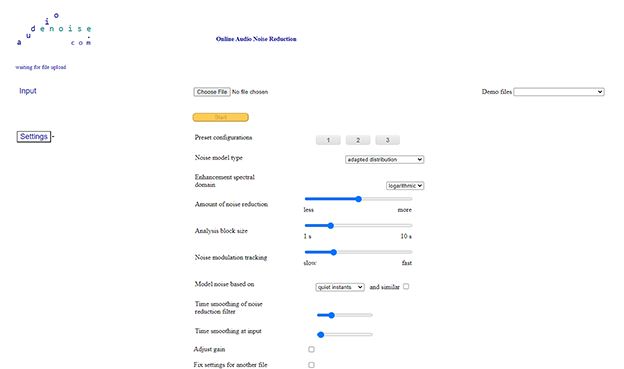
- #Reduce noise in photos online install#
- #Reduce noise in photos online software#
- #Reduce noise in photos online iso#
- #Reduce noise in photos online professional#
- #Reduce noise in photos online free#
#Reduce noise in photos online software#
Topaz DeNoise AI is, without a doubt, the best noise reduction software in 2021.

#Reduce noise in photos online professional#
However, as it is best suited for professional photographers, it might be a bit difficult to understand for beginners. Photoshop allows you to adjust the intensity of the noise reduction filters and it provides pretty decent results. To do so, go to Filter > Noise > Reduce noise. Then, you can apply a noise reduction filter and play around with other tools to control the amount of noise. When you open your RAW files in Photoshop, you can first process general noise reduction in Camera Raw exactly as you would do on Lightroom. On top of that, you can stack several images and use more advanced techniques to reduce noise. The nice thing about Photoshop is that it allows you to apply noise reduction selectively by creating masks and using RGB channels. Lightroom noise reduction performance is not as effective as other programs.Īlong with Lightroom, Adobe Photoshop is a practical alternative to remove noise if you already use Adobe software.Complete program for a smooth workflow.Detail slider to recover some information in the photo.
#Reduce noise in photos online install#
Luckily, you can always install a noise reduction plugin if you want more advanced features. Yet, it’s quite limited compared to other programs. In general, Lightroom provides handy tools to deal with general noise and works perfectly for most situations. You just need to open the Detail panel in the Develop module and use the Noise Reduction sliders until you are satisfied with the results. Reducing noise in Lightroom is super easy and effective, and since you probably already have it installed, it’s one of the most convenient options to get noise-free images. Price: various subscription plans from $9.99/monthĪdobe Lightroom is a well-known photo editing software that offers two types of noise reduction (color and luminance) so you can fine-tune all the details you want. Let’s start with one of the most common programs among hobbyists and professionals: Adobe Lightroom Classic
#Reduce noise in photos online free#
Here is a varied list of 13 great picks to suit all budgets- including free online alternatives! Plus, they all offer free trials, so you can test them before making a decision. Now that we know what causes noise, it’s time to talk about the best noise reduction software for photographers. After all, there is no magic solution that can fix a bad photo. That aside, you should have realistic expectations and understand that there would be situations in which you will have to live with a bit of noise. Of course, for best results, you must shoot RAW and try to get as much quality as possible in-camera. However, today you can find high-grade noise reduction tools equipped with AI features and advanced algorithms to remove both luminance and color noise while preserving image quality. The only issue is that you might lose some detail during this process.

Simply put, noise reduction software smoothes the photo to reduce the unwanted texture while decolorizing distorted pixels to match the surrounding colors.
#Reduce noise in photos online iso#
This type of noise is related to image exposure, high ISO numbers, and the size of the pixels. In contrast, luminance noise is colorless, and it looks similar to grain. It looks like a kind of colored, unaesthetic grain that is most noticeable in the dark areas of the photo. That said, there are two types of noise in digital photography: color noise and luminance noise.Ĭolor noise (also called chromatic or chroma noise) refers to hue variations between pixels. Like grain, it appears mostly when we work with high ISO, as we are “forcing” the pixels of the sensor.

On the other side, digital noise is an unwanted signal that produces random variations of color and brightness in images. It is also worth noting that films with larger crystals are more sensitive, so they are associated with very high ISO values. The bigger the crystals, the bigger (and more noticeable) the grain. Grain only appears in analog photography, and it is a texture produced by the photosensitive crystals that cover the film. Understanding noise in digital photographyįirst of all, although some people define the term noise as grain, they are two different concepts.


 0 kommentar(er)
0 kommentar(er)
